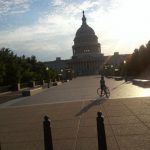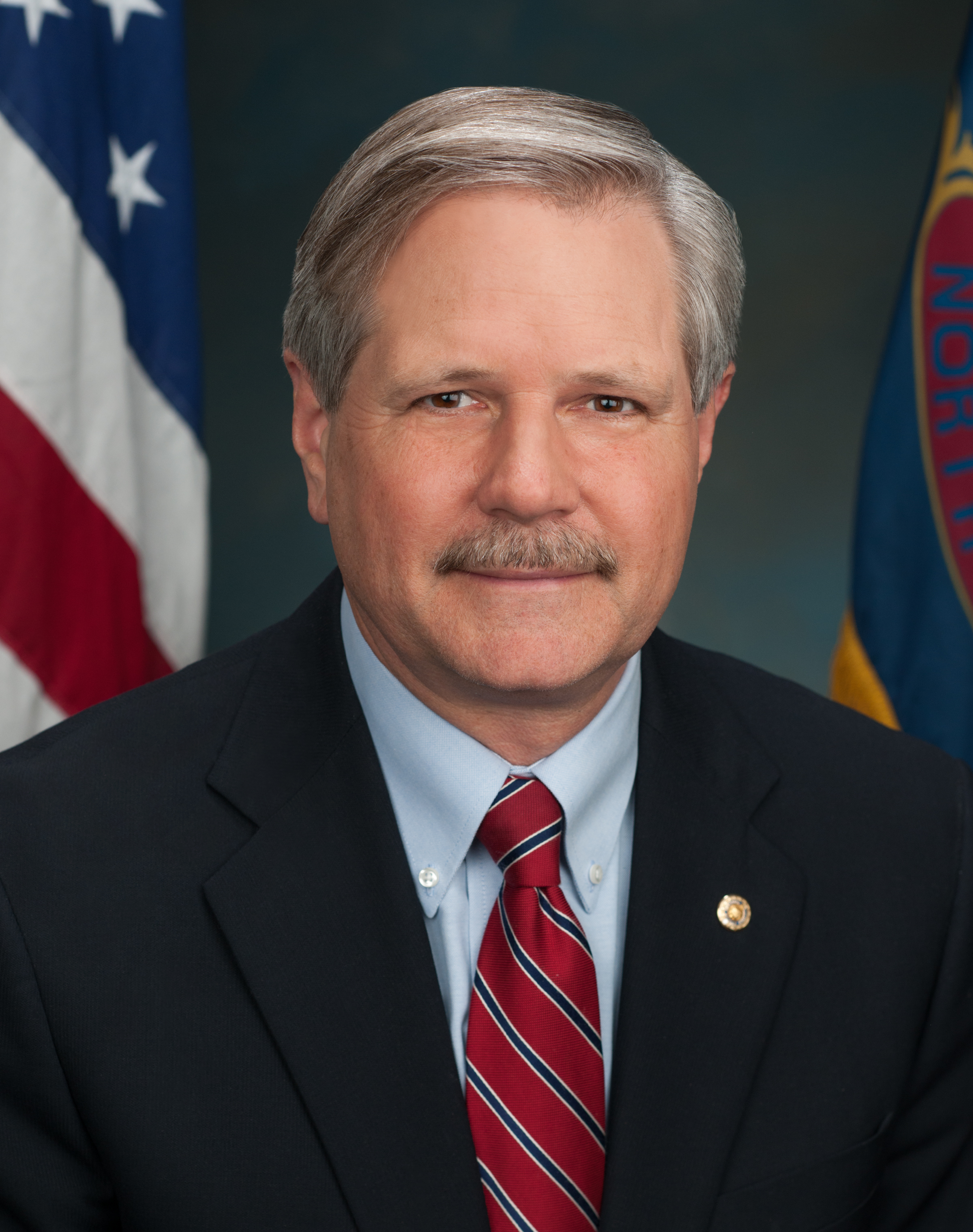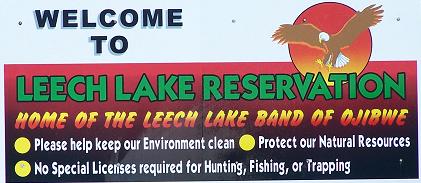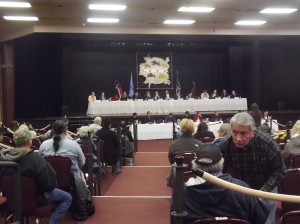Honorable Chairman John Hoeven,
On June 30, 2014, then U.S. President Barack Obama stated in a letter to Speaker John Boehner that children crossing our southern border are an urgent humanitarian situation and the U.S. has a legal and moral obligation to make sure they are appropriately cared for. Today, Americans across the nation are vilifying President Donald Trump out of concern for refugees across the world.
The federal government, which has claimed Native American children and their parents as wards, has an even greater legal and moral obligation to alleviate the humanitarian crisis within our reservation system. “…there is no resource that is more vital to the continued existence and integrity of Indian tribes than their children and that the United States has a direct interest, as trustee, in protecting Indian children who are members of or are eligible for membership in an Indian tribe…” (Indian Child Welfare Act of 1978)
Many across the world have also been outraged by the legal route chosen for the Dakota Access Pipeline. Despite clear facts outlined in the District Court ruling in September, 2016, an unsettling number of people have protested the danger youth of Standing Rock would face if at some point the water would become polluted.
Yet, most of these people have been silent concerning the number of murdered children on many reservations, as well as the epidemic of teen suicide. Albeit – many do not know about the violence. Much of the media that has been trumpeting unsubstantiated #NoDAPL claims, has ignored the documented reports of child abuse on many reservations.
 Very few news outlets have reported on children such as 18-month-old Jastin Ian Blue, who, after having been removed from his mother due to neglect and abuse, was murdered by her in October, 2014, after Standing Rock officials returned him to her.
Very few news outlets have reported on children such as 18-month-old Jastin Ian Blue, who, after having been removed from his mother due to neglect and abuse, was murdered by her in October, 2014, after Standing Rock officials returned him to her.
In 2014, the National Court Appointed Special Advocate Association reported, “… research shows that while the US child mortality rate for children ages 1 to 14 has decreased by 9% since 2000, it has increased by 15% among AI/AN children.” And the Center for Native Youth reported, “Violence, including intentional injuries, homicide and suicide, account for 75% of deaths for AI/AN youth age 12 to 20” (SAMHSA). (Center for Native American Youth 2014). “Types of crimes that Native Americans are likely to be victimized by include: murder, assault, drug trafficking, human trafficking, and gang violence” (Tighe, 2014).(Hyland 2014, 4).
Worse, reservation child abuse is frequently underreported. It is common for those witnessing abuse to say nothing, as illustrated by the seven currently facing federal charges after Pine Ridge law enforcement found two toddlers in November, 2016, weighing 13 pounds each. The girls were so severely malnourished that a pediatrician compared them to World War II concentration camp prisoners. It appears many were aware of the girls’ condition, but said nothing.
There are varied reasons for this. There is a culture of silence on many reservations. You do not turn family in. Other witnesses may be afraid to come forward because they had been complicit or even participatory in the early stages of the abuse. Others say abuse must be kept quiet to prevent challenge to and weakening of tribal sovereignty and the Indian Child Welfare Act.
Whatever the reason, with few seeming to care about the abuse and trafficking on many reservations, children end up feeling trapped and hopeless. A report from President Obama’s office stated, “Suicide is the second leading cause of death—2.5 times the national rate—for Native youth in the 15 to 24 year old age group” (Executive Office of the President 2014, 5), while NICWA reported, “Native teens experience the highest rates of suicide of any population in the U.S.—at least 3.5 times higher than the national average.11 (NICWA, SAMHSA 2014)
Data concerning the extent of child abuse within Indian Country abounds. Some of the reports given by tribal entities and organizations have phrased the data to make it appear that these dangers are connected to heritage. But the data is flawed. There might, in fact, be a higher percentage of children hurt within the reservation system than currently thought, and it is not about heritage. The cited statistics most often include the number of those self-reporting heritage on the U.S. census. But most of those reporting heritage on the census live outside of Indian Country and are not having the same issues those living with reservation boundaries are experiencing.
According to the last two U.S. censuses, 75% of U.S citizens with tribal heritage live outside of Indian Country. This includes persons of 100% heritage who choose not to be involved with the reservation system. Some have moved away to protect their children from the high incidence of crime and corruption. Others have never lived on a reservation. In fact, most enrollable citizens have less than 50% tribal heritage, have mainstreamed, and are well-connected with non-native relatives. Some have not been connected to the reservation system for over two generations.
Further, many dissident families living away from the reservation system may or may not have been experiencing the levels of abuse and violence that children within the reservation system experience. The data on their health doesn’t always make it to the reporters of tribal health and welfare statistics. Some of these families living outside the reservation system may self-report elements of their heritage to the U.S. census, but that does not mean they are eligible for federal Indian benefits, are served by tribal resources, or have any connection with Indian Country. Many of them are uncountable in the statistics gathered by Indian Health Services or other reporters.
The reported data concerning ‘Native American child abuse’ consequently pertains more to children within Indian Country who use the benefits and services and are under the auspices of tribal governments, the federal Administration of Children and Families, the Bureau of Indian Affairs, and other federal ‘help’ agencies – than it does to children in the mainstream who are unconnected to Indian Country.
Clearly – all this considered – emotional and physical dangers for children are much greater within Indian Country than they are without. Violence is higher for many reasons – including (but not limited to) the inability of State law enforcement to make arrests, the prevalence of gang activity, alcohol and drug abuse, and alcohol related birth defects. Yet, despite the many hearings, reports and billions of dollars spent to improve quality of life within the reservation system, the situation appears to be only getting worse.
Unfortunately, ICWA statistics – including how many children are affected by the ICWA every year, what percentage of those affected were taken from long term homes where they felt safe and loved – then placed into tribal foster homes and been hurt, what percentage had never lived within Indian Country or been acquainted with the culture prior to being subjected to ICWA, and what the long-term emotional and physical health outcomes for the children have been – are not readily available. But that doesn’t dismiss the value of common sense and logic.
The theoretical implication of the large amount of available data on Native American child abuse – data that has been reported as true by tribal government entities, their supporters, and the Obama administration – is that children who are taken from homes known and proven to be safe, stable, and emotionally and physically healthy outside of Indian Country, and placed into a home within Indian Country, are more likely to be placed into situations less safe, stable, and emotionally and physically healthy than the home they have been taken from.
Further, these theoretical implications should be obvious to tribal and federal governments as well as organizations servicing Indian Country, as they are the ones reporting the data.
Therefore, children who fall under the jurisdiction of the Indian Child Welfare Act – meaning children who a tribal government has deemed to be members and who have been brought before a judge for a custody hearing, regardless of whether they and their families have been connected to Indian Country – are being consciously placed into potentially dangerous living situations by tribal, state, and/or federal government officials who know – or should know – the potential for harm.
Nevertheless, a concerned community does not wait for additional studies to act on an obvious and immediately known danger. We don’t wait for a study to rush a child out of a burning building. When a child is bleeding to death, we know to immediately put pressure on the wound and get the child to a hospital. Unwillingness to deal effectively with the immediate needs of children suffering extreme physical or sexual abuse from their extended family or neighborhood casts doubt on tribal and federal government assertions that the best interest of the children is of paramount importance.
The real racism – is the attitude that the documented and immediate needs of certain children of a particular heritage can wait a few more years so as to not interfere with the desires and demands of political leadership. While claiming to be “raising the standard” for children of heritage by allowing them to stay in a documented dangerous environment, or to return to a dangerous family setting prematurely, or to take them from an environment known to be safe and deliberately place them in danger – federal and tribal officials have been in fact lowering the standard to the point of cruel negligence. Many children of tribal heritage are, in fact, not being given protection equal to what other children are legally mandated to receive.

The twin of murdered toddler Lauryn Whiteshield, is currently threatened with removal from her home in Bismarck – to be placed back on the Spirit Lake reservation where she watched her sister die. We can only imagine the horror the foster parents are feeling right now, not to mention how this now six-year-old will feel when the transfer takes place. In the Spring of 2013, the three-year-old twin sisters were taken from the safe, loving home in Bismarck where they had lived most of their lives. and were placed with their grandfather and his girlfriend, a woman known to have been abusive to children in the past. Lauryn was murdered within a few weeks. This happened during a period when both the BIA and U.S. Attorney’s office had taken over law enforcement and social services on the Spirit Lake Reservation due to a rash of uninvestigated child homicides and were supposedly monitoring placements to prevent further murders. The non-native foster mom the girls were taken from read a victim’s impact statement for the sentencing of the murderer of Lauryn. The federal government, she said, allowed it to happen, and “ICWA can be an evil law when twisted to fit the tribes wants or needs.”
The Goldwater Institute wrote concerning Lauryn, “The forced transfer from a safe, loving foster family to a home that posed great and obvious danger to the girls did not happen in a third-world country but in the United States. It did not happen 40 or 60 years ago but in 2013. And it did not happen because the court ignored the law but because it followed it. Had any of the child custody laws of the 50 states been applied, in all likelihood Lauryn would be alive today. That is because state laws require consideration of the “best interests of the child” in determining termination of parental rights, foster placements, and adoptions. That bedrock rule protects all American children – except children of Native American ancestry, like Lauryn. Although she had never lived on a reservation, because of Lauryn’s ancestry, she was made subject to the Indian tribe’s jurisdiction, which determined it was better to “reunify” her with a grandfather with whom she had never lived instead of the non-Indian foster family who had raised her from infancy and wanted to adopt her.” (Bolick 2015).
While adoption isn’t the only or best answer for every situation in Indian Country, it is notable that on January 1, 2013, the U.S. Senate unanimously passed S. Res. 628, expressing disappointment over the Russian law banning adoption of children by American citizens.
Senator James Inhofe, one of the two Senate Co-chairs of the Congressional Coalition on Adoption, rightly stated, “It is extremely unfortunate and disheartening that the Russian Duma and President Putin would choose to deprive the children, the very children that they are entrusted to care for, the ability to find a safe and caring family that every child deserves…It is nothing more than a political play…that ultimately leads to greater hardships and more suffering for Russian children who will now be denied a loving family.”
The Congressional Coalition on Adoption Members also sent a bi-partisan letter to President Putin urging him to veto the legislation, stating, “…Nothing is more important to the future of our world than doing our best to give as many children the chance to grow up in a family as we possibly can.”
Americans have continually expressed concern over Vladimir Putin’s adoption ban. As recently as in the last couple weeks, evangelical ethicist Russell Moore and Kay Warren, wife of Saddleback Church Pastor Rick Warren, have blasted the ongoing restrictions and called on Christians to pray for abandoned babies and children in that country. It is admirable that Americans feel the pain of Russian children deprived of love and stability and want to help. Americans need to be made aware of children with comparable needs here in America.
The argument against ICWA goes further than just adoption, though. Speaking as the birth mother of several enrollable children – it is also important to recognize that many birth families don’t want tribal governments to have jurisdiction and control over their children.
Children who had never been near a reservation nor involved in tribal customs, some with extremely minimal blood quantum – as well as some with maximum quantum – have been removed from homes they know and love and placed with strangers chosen by tribal social services. Although it is often said that the ICWA has safeguards to prevent misuse, stories concerning the trauma of ICWA on families – including multi-racial families – abound across America. Abuses are rampant on many reservations because the U.S. Government has set up a system that allows extensive abuse to occur unchecked and without repercussion.
It appears some within our federal government have reduced our children to the status of a mere “resource’ – choosing to please political leaders rather than save children’s lives. This, while denying tribal members the right to oversee and manage their own physical property and resources. Children, it seems, are a demanded “resource” – and personal, private property is disregarded and ignored as an economic resource. When one boils down the entirety of federal Indian policy – just how does our federal government view tribal members? Indeed, why are children treated as assets, and adults treated as children?
The ability to use your personal property as leverage – to collateralize your assets – is an important economic principle. Yet this principle is denied to individual tribal members despite the extreme level of poverty within Indian Country. It is undeniably a direct result of the infringement of federal Indian policy on individuality, liberty and property that many tribal members continue to struggle in poverty.
Allowing property rights for individual members – while removing the financial incentive for tribal leaders to use children as property, supporting law enforcement, and upholding full constitutional rights and protections for all citizens – would vastly improve the economy, attract more members back to Indian Country, and potentially lessen the financial incentive for tribal leaders to use children as a financial resource. Allowing individuals to freely use their personal resources as financial leverage would preserve to citizens their God-given right to individuality, liberty, and property.
It’s time to stop listening to those with a vested financial interest in increasing tribal government power. Every time power to tribal leaders is increased, tribal members – U.S. citizens – are robbed of civil freedoms under the constitution of the United States. Equal Protection is a constitutional right. More power given to tribal leaders means less freedom and constitutional rights for tribal members.
This said, we are asking you, Senator Hoeven, to include these issues in the 2017-2018 Senate Committee on Indian Affairs agenda:
A. Guarantee protection for children of Native American heritage equal to that of any other child in the United States.
B. Guarantee that fit parents, no matter their heritage, have the right to choose healthy guardians or adoptive parents for their children without concern for heritage.
C. Recognize the “Existing Indian Family Doctrine” as a viable analysis for consideration and application in child custody proceedings. (See In re Santos Y, In Bridget R., and In re Alexandria Y.)
D. Guarantee that United States citizens, no matter their heritage, have a right to fair trials.
• When summoned to a tribal court, parents and legal guardians will be informed of their legal rights, including USC 25 Chapter 21 1911 (b) “…In any State court proceeding for the foster care placement of, or termination of parental rights to, an Indian child not domiciled or residing within the reservation of the Indian child’s tribe, the court, in the absence of good cause to the contrary, shall transfer such proceeding to the jurisdiction of the tribe, absent objection by either parent…”
E. Include well defined protections for Adoptive Parents.
F. Mandate that a “Qualified expert witness” be someone who has professional knowledge of the child and family – not merely knowledge of the tribe or traditional customs – and is able to advocate for the well-being of the child, first and foremost.
G. Mandate that only parents and/or legal custodians have the right to enroll a child into an Indian Tribe. It is claimed that tribal membership is a political rather than racial designation, therefore, parents, as U.S. citizens, should be the sole decision makers in regard to political affiliation for their families. Political membership should not be forced upon children or families.
• Remove the words “or are eligible for membership in” 1901 (3)
• Remove the words “eligible for membership in” from 1903 (4) (b), the definition of an ‘Indian child’ and replace with the words “an enrolled member of”
H. Secure to all American citizens their individuality, liberty and property. “Life, liberty, and property do not exist because men have made laws. On the contrary, it was the fact that life, liberty, and property existed beforehand that caused men to make laws [for the protection of them] in the first place.” (Frederic Bastiat, The Law, p. 5-6.)
These requests can be summarized as an insistence that all American citizens, no matter their heritage, be allowed full benefit of their constitutional rights. We can expand on any of these points and provide documented reasoning upon request.
In the words of Dr. William Allen, Emeritus Professor, Political Science, MSU and former Chair of the U.S. Commission on Civil Rights, when speaking at the ICWA forum, October, 2011, in the Senate Committee on Indian Affairs chambers:
“… We are talking about our brothers and our sisters. We’re talking about what happens to people who share with us an extremely important identity. And that identity is the identity of free citizens in a Republic…”
Thank you,
Elizabeth Morris
Chairwoman
Christian Alliance for Indian Child Welfare
~~~~~~~~~~~~~~~~~~~~~~~~~~~~~
READERS: Three of the children in this attached photo were murdered after being placed by the Indian Child Welfare Act into homes that were or should have been KNOWN to be very dangerous.
Another child shown here was beaten after being taken from his very safe, loving Latino grandparents and placed with his maternal grandmother on the Ute reservation. The maternal grandmother had a recorded history of child abuse. Her daughter – the mother of this child – was removed from her care due to abuse. That daughter did NOT want her children placed with her mother – she KNEW the children would be abused. The State of California and the Ute reservation did it anyway – resulting in permanent brain damage to one of the children within three weeks.
The fifth child in this photo was taken at the age of six from the only home she knew and loved. She had an extremely small percentage of heritage – but was still considered the property of the tribal government and subject to their abuse of law.
Please share this with your friends.
PLEASE also share with YOUR Congressmen. MANY of them take a stand on all kinds of things – from orphans in Russia to immigrants and refugees from overseas. DEMAND that they take a strong stand for children in the United States – CITIZENS subject to abuse by a law they – Congress – created and MUST remove.
Find your States Congressmen here:
https://www.senate.gov/
https://www.house.gov/
Thank you – and PLEASE Share….









